Gallery opened: July 2006
Updated: 26 Oct 2019
Catalog pic added




Compressed on L'Ouest- The Ouest Air Locomotives |
Gallery opened: July 2006 |
Construction of the Invalides to Versailles-Rive-Gauche railway line began in 1840. In 1900 the line was extended from Champ du Mars to new underground railway station by the side of the Seine, called Invalides, to serve the 1900 World Fair. This section was completely covered without any ventilation for steam locomotives; the Ouest Company had concluded agreements with the City of Paris that excluded the use of steam engines inside the new station. The line was normally worked by electric locomotives that drew 750V DC from a raised third rail; this voltage was already widely used on French tramways. Delays and construction problems meant that only a shuttle service between Champ du Mars and Invalides was possible for the Fair; electric locomotives were supplemented by the four air locomotives.
The compressed-air locomotives were also intended to rescue electric trains stranded by loss of traction current. In the absence of steam traction the compressed-air locomotives, they were the best option until practical battery-powered locomtives were available.
The Company appear to have been partcularily worried about breakdowns in the Meudon Tunnel, which is still causing safety concerns today. They had probably not forgotten the Meudon Disaster, one of the first and worst railway accidents in the world.
It is suggested on the Wikipedia page for the Invalides to Versailles-Rive-Gauche line (page in French) that the air locomotives were needed for maneuvering in the Invalides station, as the complexity of the track layout made its third-rail electrification difficult.
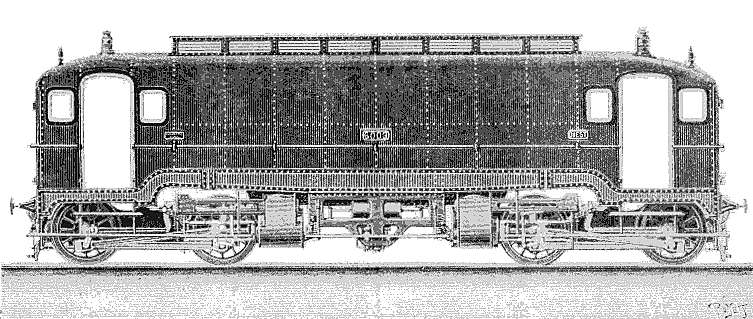 | Left: L'Ouest air locomotive 6003: 1900
|
Air charging attachments were fitted at each end; possibly these are the otherwise unexplained structures on the roof, above the door openings. There appear to have been bouillottes at each end to reheat the stored air before use, increasing power output and preventing freezing as the air expanded. For more on bouillottes and compressed-air vehicles in general see Compressed Air Propulsion.
For more on compressed-air locomotives in general see this gallery in the Locomotive Wing of The Museum of RetroTech.
These locomotives were replaced by electric locomotives in 1910. The performance may have been inadequate, or it may just be that the railway company had finally sorted out its electrical problems and wished to rid itself of these unconventional machines. Presumably the replacements were battery-operated, as otherwise they would not have been much use for rescue purposes when the power supply failed.
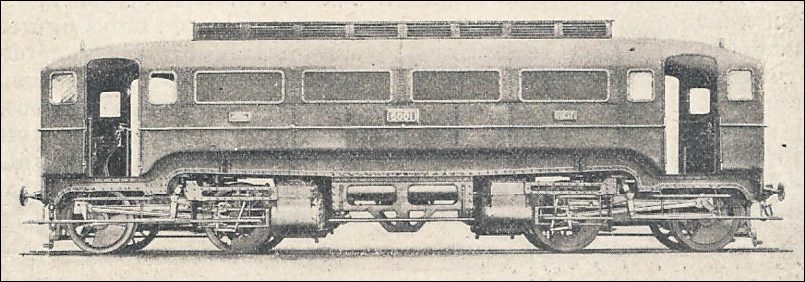 | Left: L'Ouest air locomotive 6001: 1900
|
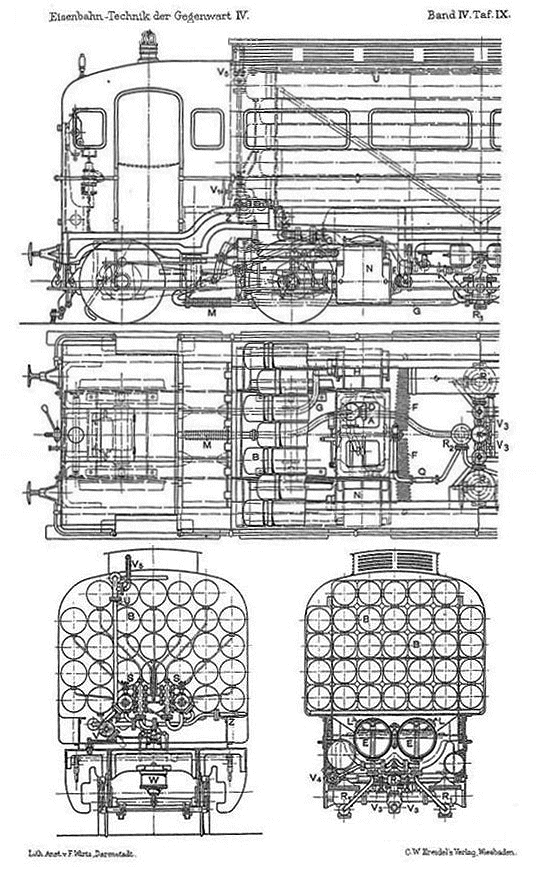 | Left: L'Ouest air locomotive: 1900
The Hardie locomotive had a storage pressure of 1000 psi in 1878. | |||||||||||||||||
Length between buffers: 13.460 m
Distance between bogie pivots: 6.800 m
Wheelbase of bogies: 22.500 m
Wheel diameter: 1.350 m
Cylinder diameter: 310, 530 mm
Storage air pressure: 15 Atm (220 psi) *
Weight: 60 tons
Power: 1300 hp |

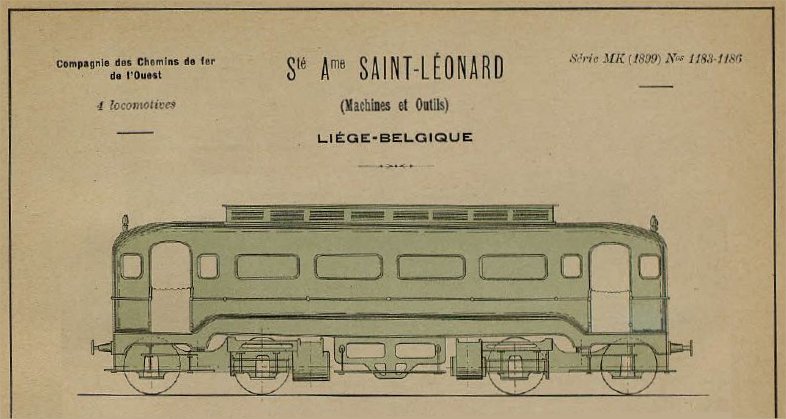 | Left: L'Ouest air locomotive: side elevation
|
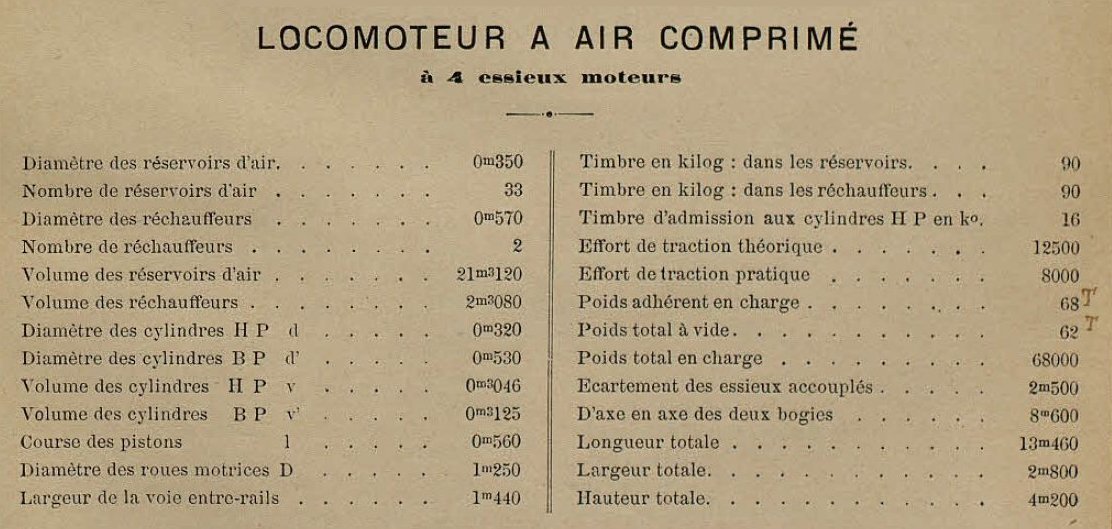 | Left: L'Ouest air locomotive: data
|

THE COMPRESSED-AIR SUPPLY
Compressed air was generated in a plant near to the esplanade of Invalides station, with three independant groups of machinery, each group comprising a three-phase electric motor energised at 5000V, supplied from a power-station at Issy by the general supply circuit, and a vertical Mekarski compressor, turning at 100 rpm and absorbing 200 HP. These took compressed air at 6kg/cm2 (85 psi)
bought from the Compagnie Parisienne*, and raised it to 100 kg/cm2. (1422 psi)
The compressors had four cylinders; and each compressor could supply 2000 kg of air per hour. (Is that right? It seems like an awful lot of air) The air at final pressure was stored in six groups of 20 tanks, storage being essential as compressed air to run the locomotives would be needed when the electricity supply failed. Adjacent were special facilities for the bouillottes; presumably for filling them with hot water.
*The Compagnie Parisienne de l'Air Comprime. (CPAC) distributed compressed air for power purposes through a network of pipes under the Paris streets. Its remarkable story can be read on this page.
From the French journal Nature for 1901, 2nd issue.

  
|